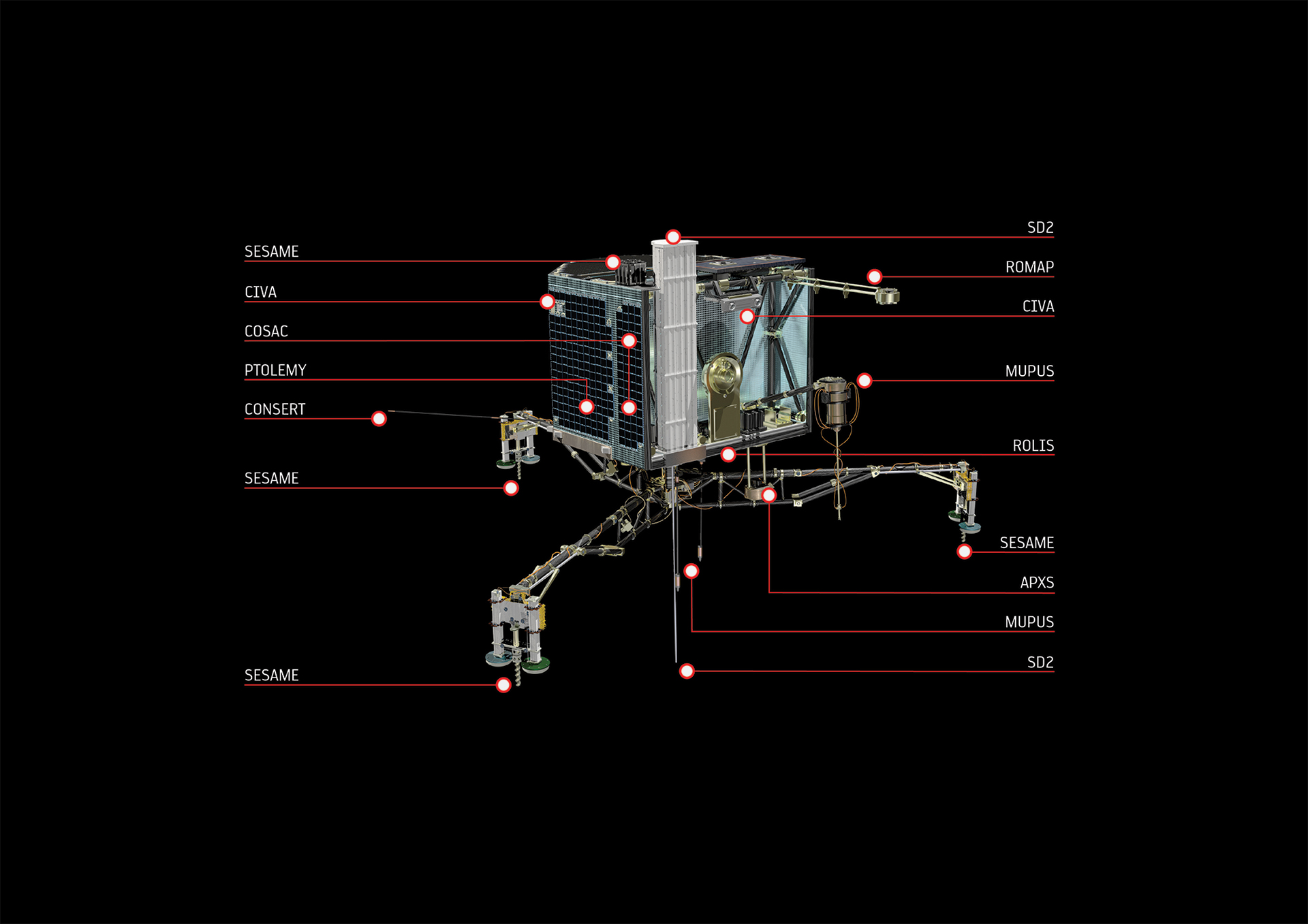
[SatNews] The Rosetta space mission’s Philae lander is set to become a key to furthering our understanding of the formation of our solar system and the origins of life, when the spacecraft attempts the first-ever soft landing on a comet on November 12, 2014.
On board is the UK-led Ptolemy instrument which will perform on-the-spot analysis of the composition of the ices and organic material within the comet.
After a decade-long journey through space, Rosetta has already become the first spacecraft to rendezvous with a comet and has been orbiting 67P since August 2014. Since the rendezvous, Rosetta, supported by scientists in the UK, has been mapping the comet’s surface; making important measurements of its gravity, mass and shape; assessing its gaseous, dust-laden atmosphere; and probing its plasma environment. Once Rosetta has released the Philae lander on November 12th, it will continue to follow the comet around the Sun and as it moves back out towards the orbit of Jupiter.

Comets are considered to be primitive building blocks of the solar system and may have helped to ‘seed’ Earth with water, perhaps even the ingredients for life. But many fundamental questions about these enigmatic objects remain, and through a comprehensive, in situ study of the comet, Philae aims to unlock the secrets within.
Touchdown
Rosetta will release Philae at 08:35 GMT on November 12th at a distance of approximately 22.5 km from the centre of the comet. Landing will be about seven hours later at around 15:30 (3:30 p.m.) GMT.
With a one-way signal travel time between Rosetta and Earth on November 12th of 28 minutes 20 seconds, confirmation of separation will arrive on Earth ground stations at 09:03 GMT and of touchdown at around 16:00 (4:00 p.m.) GMT.
During the seven-hour descent, Philae will take images and conduct science experiments, sampling the dust, gas and plasma environment close to the comet.
It will take a ‘farewell’ image of the Rosetta orbiter shortly after separation, along with a number of images as it approaches the comet surface. It is expected that the first images from this sequence will be received on Earth several hours after separation.

Once safely on the surface, Philae will take a panorama of its surroundings. Again, this is expected back on Earth several hours later.
The first sequence of surface science experiments will begin about an hour after touchdown and will last for 64 hours, constrained by the lander’s primary battery lifetime.
Longer-term study of the comet by Philae will depend on for how long and how well the batteries are able to recharge, which in turn is related to the amount of dust that settles on its solar panels.
For more information, please visit the UK Space Agency infosite, the UK Rosetta infosite, the Rosetta blog, or the ESA Rosetta page

